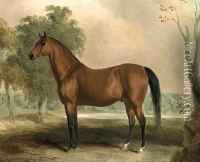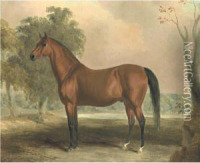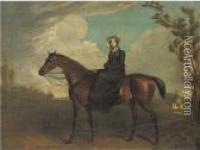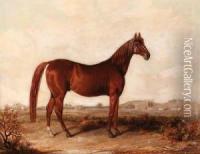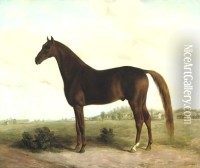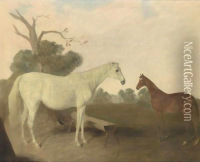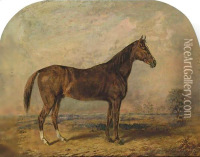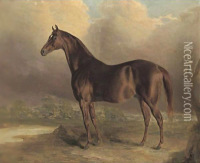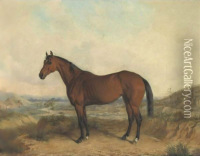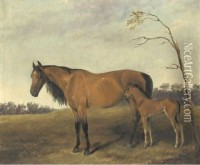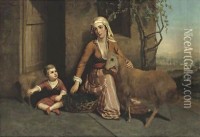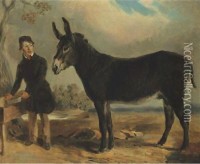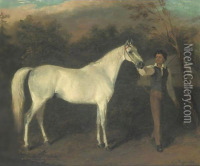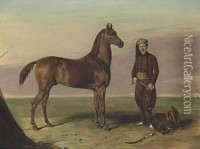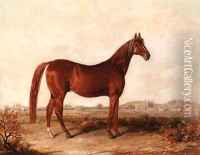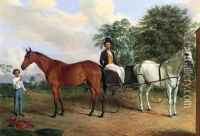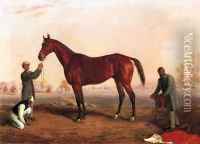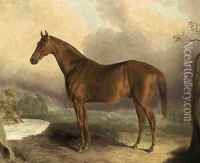Edward Troye Paintings
Edward Troye was a painter of Swiss origin who became widely recognized for his depictions of American racehorses and their landscapes. Born in Lausanne, Switzerland, in 1808, Troye was the son of a military officer. He received his early education in Switzerland and showed an early interest in art. As a young man, he traveled extensively throughout Europe, studying art and exhibiting a profound interest in equine subjects.
Troye's artistic journey led him to England, where he was influenced by the sporting art tradition, a genre that celebrated the leisure activities of the British upper class, including horse racing. It was during this time that he honed his skills in depicting horses, a subject that would come to define his career.
In 1831, Troye moved to the United States, where he quickly established himself as a premier equine artist. He traveled across the country, from South Carolina to Kentucky, capturing the likeness of some of the most famous racehorses of the time. Troye's paintings were not merely portraits of horses; they were detailed studies that included the animal's environment and often their handlers or jockeys. This comprehensive approach helped him to create works that were both accurate and expressive.
Throughout his career, Edward Troye was commissioned by prominent horse owners and breeders who wanted to immortalize their champion horses. His works are characterized by their meticulous detail, accuracy, and ability to convey the personality and spirit of the horses he painted. Troye's legacy is a significant contribution to the genre of animal painting, specifically in the context of American sporting art.
Troye's career spanned over four decades, during which he produced a substantial body of work. His paintings are now considered invaluable records of American thoroughbred history. Edward Troye died in Georgetown, Kentucky, in 1874, leaving behind an enduring legacy as one of the foremost painters of equine subjects in the nineteenth century.
